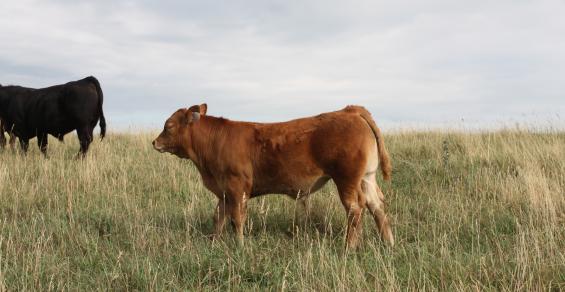Last week I blogged about a difficult topic that impacts so many farm and ranch families — opioid addiction. It might be considered taboo, but rural communities are hurting, and I hope raising awareness will help families start addressing this issue at home and getting help for loved ones who are battling addiction.
READ: Opioid addiction hits rural America hard
Today, I’m going to hit on another tough topic — suicide — an issue that is impacting farmers in large numbers.
According to an article written by former farmer Debbie Weingarten for The Guardian, “In 2016, a study by the Centers for Disease Control and Prevention (CDC) found that people working in agriculture – including farmers, farm laborers, ranchers, fishers, and lumber harvesters – take their lives at a rate higher than any other occupation. The data suggested that the suicide rate for agricultural workers in 17 states was nearly five times higher compared with that in the general population.
“After the study was released, Newsweek reported that the suicide death rate for farmers was more than double that of military veterans. This, however, could be an underestimate, as the data collected skipped several major agricultural states, including Iowa. Experts add that the farmer suicide rate might be higher, because an unknown number of farmers disguise their suicides as farm accidents.
“The U.S. farmer suicide crisis echoes a much larger farmer suicide crisis happening globally: an Australian farmer dies by suicide every four days; in the UK, one farmer a week takes his or her own life; in France, one farmer dies by suicide every two days; in India, more than 270,000 farmers have died by suicide since 1995.”
These sobering statistics are troubling, but sadly, they make sense given the high stress and demanding requirements of a career in production agriculture.. Mike Rosmann is an Iowa farmer, psychologist and a leading farmer behavioral and health export. He explained in the journal of Behavioral Healthcare, “Farming has always been a stressful occupation because many of the factors that affect agricultural production are largely beyond the control of the producers. The emotional well-being of family farmers and ranchers is intimately intertwined with these changes.”
In her article, Weingarten points out how the farm crisis of the 1980s really escalated the rates of suicide by farmers. Bankruptcy, losing land, not being able to support their families and the feelings of failure were all emotions that contributed to many farmers taking their lives.
Today, many farmers may be in the same boat once again.
Weingarten writes, “Since 2013, net farm income for U.S. farmers has declined 50%. Median farm income for 2018 is projected to be negative $1,325. And without parity in place, most commodity prices remain below the cost of production.”
The rise and fall of economic well-being is directly correlated to rate of self-imposed farmer death, says Rosmann.
So what can we do about this? It starts with raising awareness. Even if we refuse to talk about this issue, this problem won’t go away on its own. Farming and ranching can be isolating, especially if you’re battling financial stress on top of the daily work that must be done. Rural communities need to band together to offer support, lend a hand and let their neighbors know they aren’t in this alone, and it does get better.
If you would like to do something more tangible to help, check out these organizations compiled by Audra Mulkern for the Female Farmer Project by clicking here.
If you need help, contact the National Suicide Prevention Lifeline at 1-800-273-8255 or Crisis Text Line — Text HOME to 741741.
The opinions of Amanda Radke are not necessarily those of beefmagazine.com or Farm Progress.




Leave A Comment